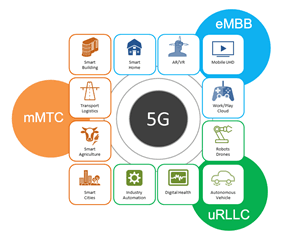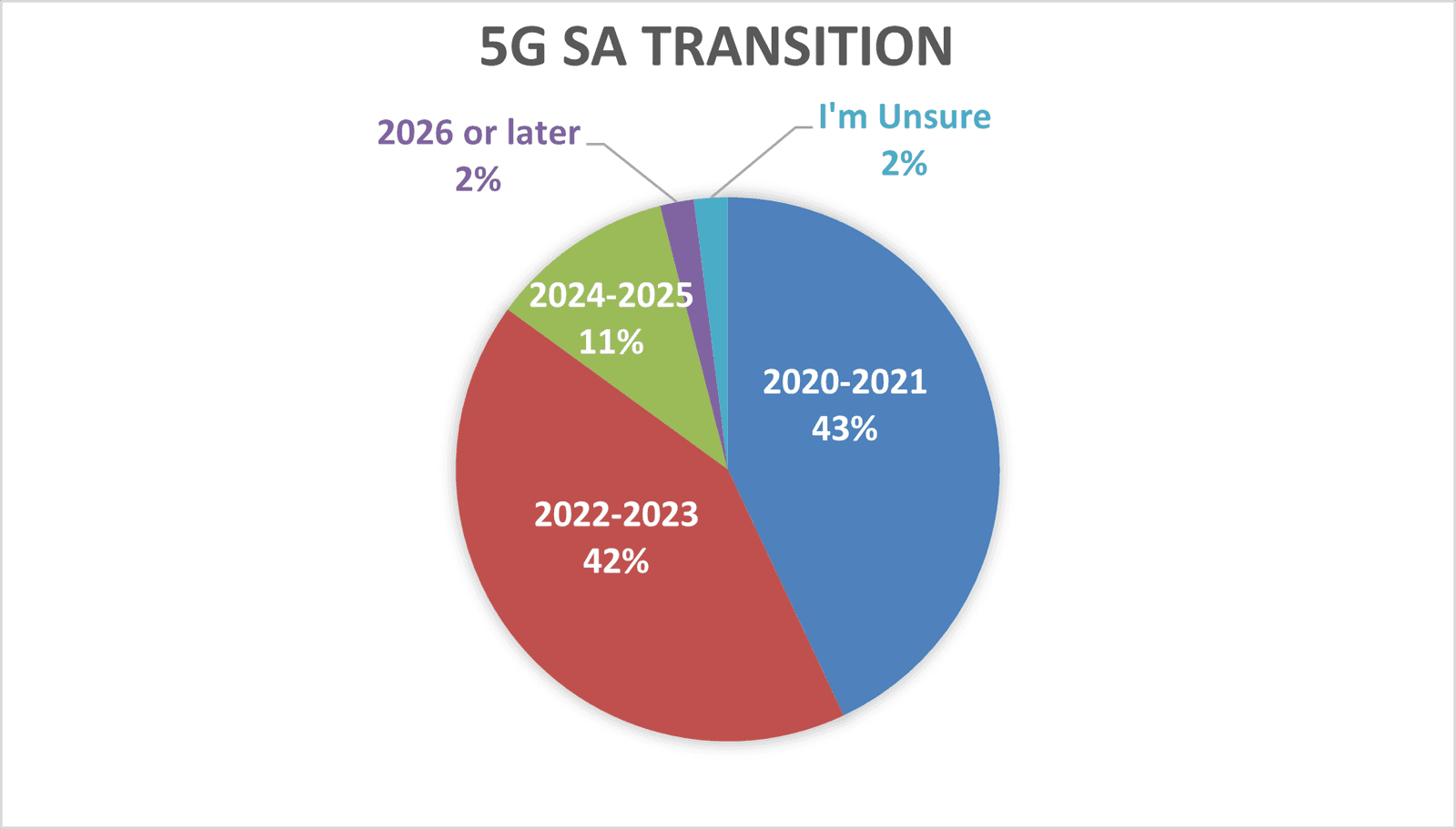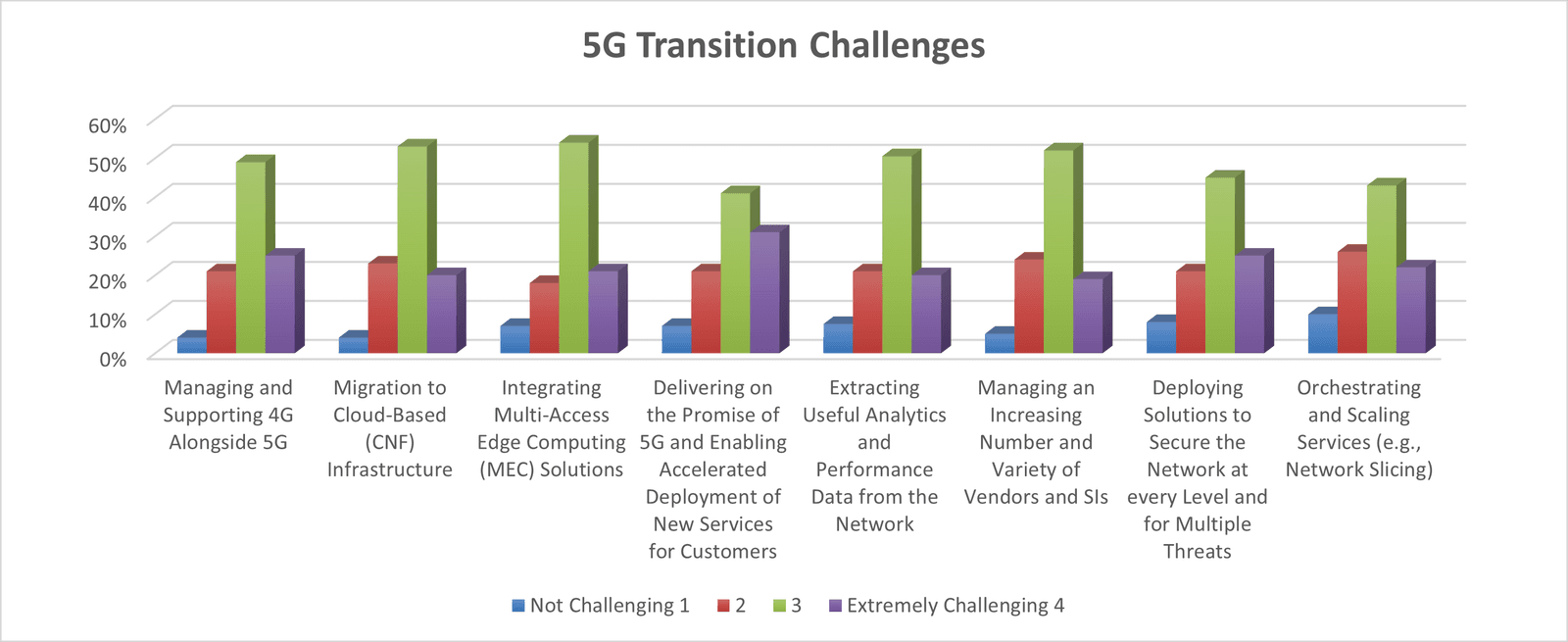When it comes to 5G and innovation, one's imagination is the only limit. We all know that 5G is largely meant to satisfy the insatiable appetite for lightning-fast speeds and real-time (sub-millisecond) latencies. But it’s also the fundamental basis for enterprise vertical industries and academia enabling the development of some really remarkable technological advances.

Figure 1: Characteristics of a 5G network segmented into 3 major use cases: massive Machine-Type Communication (mMTC), enhanced Mobile Broadband (eMBB), and ultra-reliable Low-Latency Communication (uRLLC)
5G has been around for a few years already, starting with prototype testing and then moving to 5G NR non-standalone (NSA) commercial deployments. Now we see a number of service providers testing and deploying a commercial 5G standalone (SA) core. The 5G core provides the fundamental cornerstone where service providers, enterprises, and academia can now take advantage of the full potential of 5G latencies and throughput. With the 5G SA core comes the implementation of cloud-native service-based architecture, which is a complete redesign of the existing 4G LTE monolithic core. However, unlike its predecessors, 5G is designed to work together with 4G, which paves the way to a unique service provider journey. F5 is here to partner with you as you design your new network—preserving your existing 4G network while monetizing your 5G investments.
Where does the 5G journey begin?
5G is here and is predicted to have 1.8 billion connectected devices by 2025 based on GSMA’s The Mobile Economy report for 2020. What does this mean for service providers? In this digital transformation world where 4G will continue to be the mainstay as 5G networks are rolling out, it definitely increases complexity and creates a new competive landscape as service providers are all at different stages in their journey.

Figure 2: A service provider’s 5G digital transformation is a unique journey.
5G is new for everyone, the standards are constantly evolving and this is all the more reason we need to work toward a proper transition path that makes sense for individual service providers without interrupting their customers' end-to-end quality of experience.
Based on a recent IDG analyst report, 5G and Telecommunications in 2020, F5 determined that 85% of service providers queried are planning to complete their 5G SA transition by 2022–23—which means that the race to achieve a full 5G SA architecture is moving full speed ahead.

Figure 3: When is your organization likely to complete the transition to 5G standalone (SA)? (Percentage of respondents, N=163)
Transitioning to 5G is critical, but it presents some difficulties. According to the same IDG report, 31% of service providers state that delivering on the promise of 5G and enabling accelerated deployment of new services for customers are both extremely challenging. The next big concerns seen are managing and supporting 4G alongside 5G, migrating to a cloud-based (CNF) infrastructure, and integrating multi-access edge computing (MEC) solutions.

Figure 4: Ranking of 5G challenges based on their level of difficulty (N=163)
Based on the above figure, we see that 73% of service providers are concerned with challenges they face in building a cloud-native service-based architecture infrastructure. This is exactly where F5 can help you as you start your 5G SA journey, as we are developing solutions targeting critical issues for service providers starting or building out a 5G cloud-native infrastructure.
F5’s cloud-native service-based architecture infrastructure technologies
To aid service providers on their journeys, we recently launched 5G cloud-native infrastructure solutions, including BIG-IP Service Proxy for Kubernetes (SPK) and a carrier-grade version of Aspen Mesh (CGAM).
These offerings provide traffic visibility both into and within a Kubernetes cluster to dynamically scale from the 5G core all the way to the far edge.
- F5’s BIG-IP Service Proxy for Kubernetes (SPK) brings critical carrier-grade capabilities to a Kubernetes environment to provide industry-leading enhanced performance and security for cloud-native 5G deployments.
- F5’s new Carrier-Grade Aspen Mesh solution provides observability, security, and control for the traffic flowing between Kubernetes clusters. It also addresses communication between CNFs (containerized network functions), both of which are critical functions to the deployment of a 5G cloud-native infrastructure.
Learn more about how success starts with your infrastructure
Join F5’s leading experts explain our cloud-native infrastructure technologies and learn how you can seamlessly transition your 4G networks to 5G SA. Register for our upcoming webinar on Thursday, December 3 here.
Find out more about how F5’s supports 5G innovation and mobility, including details on BIG-IP SPK and Carrier-Grade Aspen Mesh.
About the Author
Related Blog Posts

Architecting for AI: Secure, scalable, multicloud
Operationalize AI-era multicloud with F5 and Equinix. Explore scalable solutions for secure data flows, uniform policies, and governance across dynamic cloud environments.

Rein in API sprawl with F5 and Google Cloud
Find out how F5 and Google Cloud can help you secure and manage your ever-increasing API integrations.

Nutanix and F5 expand successful partnership to Kubernetes
Nutanix and F5 have a shared vision of simplifying IT management. The two are joining forces for a Kubernetes service that is backed by F5 NGINX Plus.

AppViewX + F5: Automating and orchestrating app delivery
As an F5 ADSP Select partner, AppViewX works with F5 to deliver a centralized orchestration solution to manage app services across distributed environments.
F5 NGINX Gateway Fabric is a certified solution for Red Hat OpenShift
F5 collaborates with Red Hat to deliver a solution that combines the high-performance app delivery of F5 NGINX with Red Hat OpenShift’s enterprise Kubernetes capabilities.
Phishing Attacks Soar 220% During COVID-19 Peak as Cybercriminal Opportunism Intensifies
David Warburton, author of the F5 Labs 2020 Phishing and Fraud Report, describes how fraudsters are adapting to the pandemic and maps out the trends ahead in this video, with summary comments.